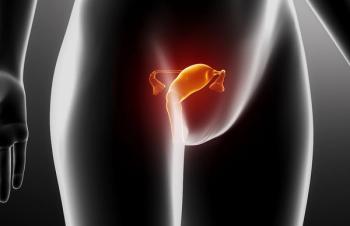
The difficulty of finding the best way to find missing primary cancers
Rosetta Genomics, which has a test to identify tissues of origin for metastatic cancers with an unknown primary, just won back the rights to market its own test in the US. But it's expected to post a loss this year. If it can find missing cancers, why isn't Rosetta rolling in cash?
Yesterday Rosetta Genomics, an aptly named firm based in Israel that specializes in molecular profiling of tissues, finally won back in arbitrations the right to distribute its own cancer diagnostic tests in the United States. This ends an 18-month legal wrangle with its former US distributor, Prometheus Laboratories, over funding disputes.
You'd think this would be an auspicious time to regain the rights to the test that it calls miRview mets, which identifies tissues of origin for metastatic cancers with an unknown primary (CUP). But the company must pay Prometheus $3.1 million over the next 18 months, and Rosetta is not well placed to give away money at the moment.
Profits are "now a fond memory" for Rosetta, said an
If it can find missing cancers, why isn't Rosetta rolling in cash?
Missing primaries: A shot in the dark
Tests that can pinpoint the source of a CUP should be an easy sell, because the absence of a primary tumor in a patient who presents with metastases (which happens in as many as one of 20 cases of metastatic cancer) is a tragic loss. At a time when treatments are increasingly targeted by tumor subtypes, not knowing the nature of the primary makes the choice of treatment something of a shot in the dark. Patients for whom a primary tumor is never identified have significantly shorter survival than others; they live on the order of a few months after diagnosis.
Compared to other ways of hunting for a primary, moreover, molecular tests that can pinpoint the missing primary based on genetic profiles of numerous tumor types appear to be a bargain. A 1995 study estimated that (absent molecular testing) doctors were spending about $18,000 trying to find unknown primaries. The new molecular tests cost around $3500, surely a modest investment in a good cause.
Like the two other companies that offer molecular profiling to identify CUPs in the US, Rosetta claims about 85% accuracy for its tests. Uniquely, the miRview mets test is based on microRNAs, a family of regulatory RNA genes involved in differentiation and oncogenesis, which are highly tissue-specific. So why have the fortunes of Rosetta Genomics turned dark? Because pathologists still don't trust the technology, and they have their reasons.
Tissue of Origin versus MiRview mets (or not)
Its problems with Prometheus aside, Rosetta is David to the Goliath of Pathworks Laboratories, whose Tissue of Origin test has been cleared by the FDA. In a retrospective study reported recently by Pathworks, the Tissue of Origin test (which is based on a 1500-gene microarray) was able to predict a primary site in 96% of cases. These results were "generally compatible" with results from clinical features, immunohistochemistry, and response to treatment, says the report. And the test could identify primary sites for 18 of 19 tissues that another assay, the CUP test developed by Veridex of La Jolla CA, was unable to type.
The Veridex test can identify only 6 sites of origin: pancreas, colon, lung, ovary, breast, and prostate. Tissue of Origin, by contrast, claims to have the gene expression profiles of 15 known tumor types. By that standard, Rosetta's miRview mets should be a clear winner. Just last month Rosetta announced development of a second-generation version of miRview mets, which boosts the number of different tissue types it can recognize from 25 to 40. So why aren't pathologists standing in line to buy these tests that could apparently save both money and misdiagnosis?
As pointed out in a
In the
Internal validations
The validations of molecular profiling tests, however often repeated and reported and however positive, are always carried out internally. These tantalizing technologies are black boxes, and as Monzon points out in his review, pathologists "are used to having control and comprehensive understanding of all testing derived from 'our' tissue samples."
The patients who yielded up those samples in the first place are still waiting for medical science to determine which of the new options is best for solving their problem. This is theoretically possible, but it is not yet happening.
One prospective trial, announced as a
Meanwhile, Rosetta has launched an observational trial at two sites in Israel, to be completed by mid-2012, comparing miRview mets with a conventional workup for CUP. This isn't as good as comparing it with the competition, of course, but it's something. However, the primary outcome is cost-effectiveness, not an absolute clinical measure such as mortality.
What's needed, of course, are peer-reviewed publications of trials comparing all of these tests to each other and to standard histopathology, as well as prospective studies that establish whether molecular profiling actually improves outcomes for patients with CUPs. It's a good bet they do, but who knows for certain?
Newsletter
Stay up to date on recent advances in the multidisciplinary approach to cancer.
































































































